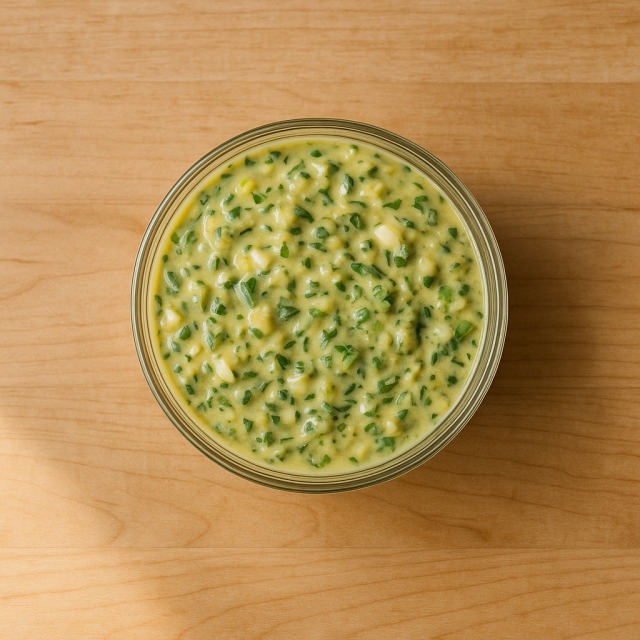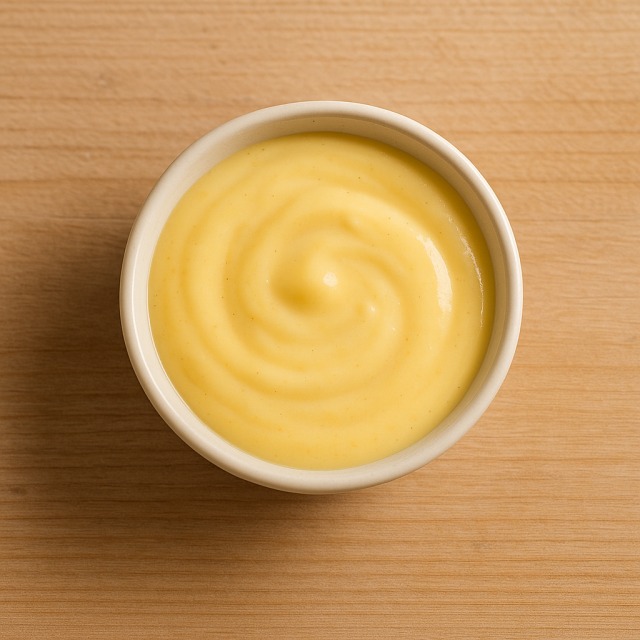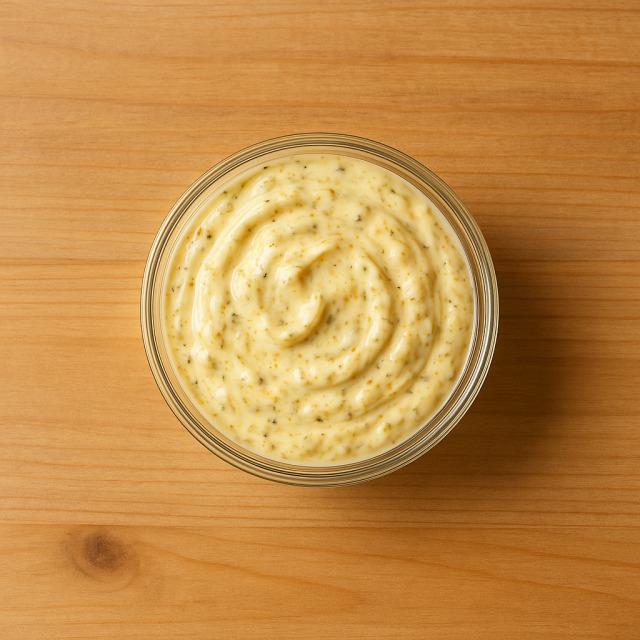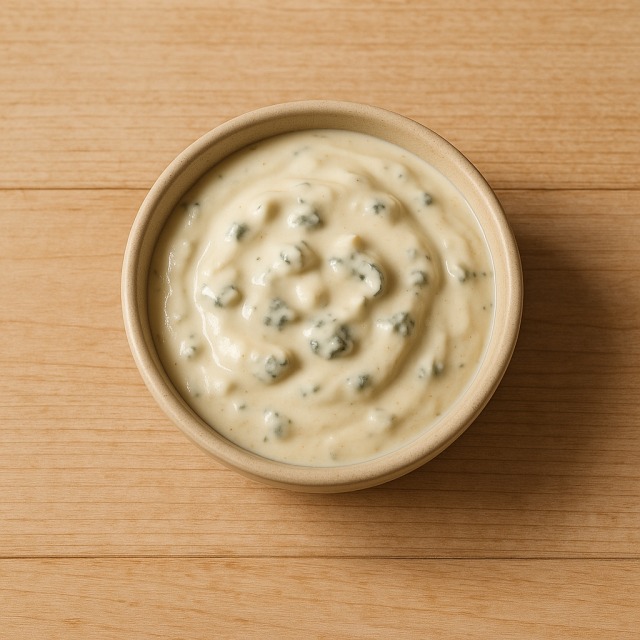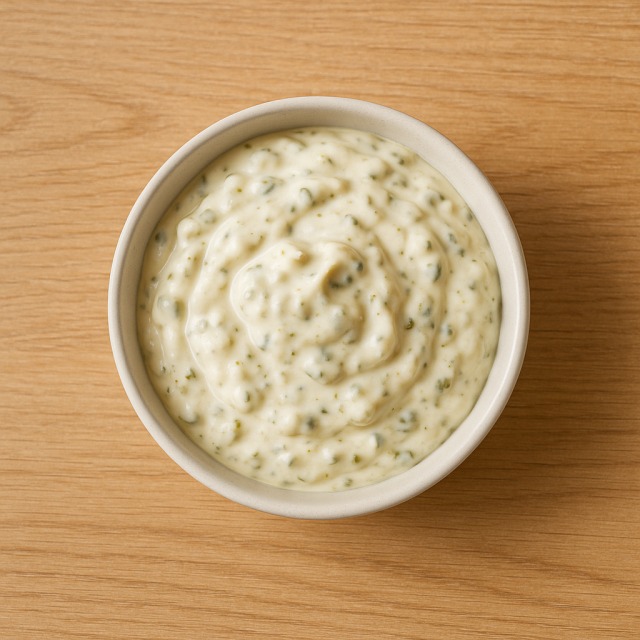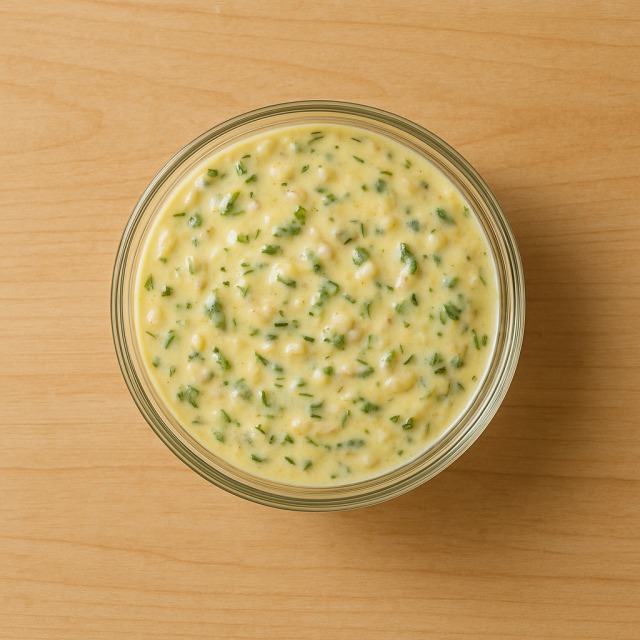Calorie Chart / Seasoning & Sauces / Mornay sauce
How Many Calories Are in Mornay sauce?
Calculation of the nutritional value & Recommended Dietary Intake of Mornay sauce
For g and a calorie requirement of kcal
| Calories 16 kcal | Proteins 0.8 g | Lipids 0.8 g | Carbohydrates 1.4 g |
| 1% | 1% | 1% | 1% |
Health benefits of Mornay sauce
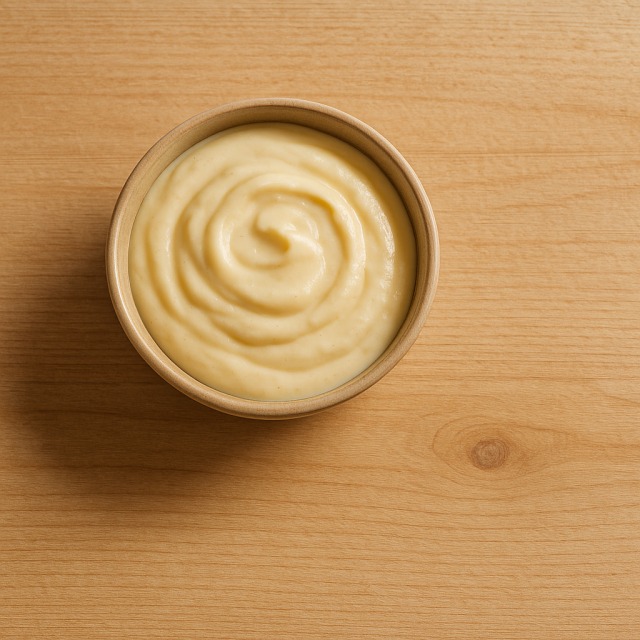
Mornay sauce - 100g
Calories 108 kcal
Proteins 5.5 g
Lipids 5.5 g
Carbohydrates 9 g
With 108 kcal per 100 g, Mornay sauce is a moderate-calorie condiment: it delivers flavor without exploding your daily calories allowance, yet reminds you that every spoonful still counts in the calorie balance. Its matrix of semi-skimmed milk, a touch of butter, and melted cheese offers a balanced mix of proteins, lipids, and carbohydrates, so the calories are distributed rather evenly.
The cheese component—often Gruyère or Parmigiano—brings valuable nutrients. You will find calcium for bone health, phosphorus that supports energy metabolism, vitamin A for vision and skin, plus vitamin B12 that helps red blood cell production. These micronutrients come in a tasty package whose calories are still lower than many cream-based sauces.
Because the recipe is built on a classic béchamel sauce, the starch from flour slows gastric emptying. That means Mornay sauce can promote a gentle feeling of satiety without a huge surge of calories, which is useful both for weight management and for athletes counting calories to match their training loads.
Cheese proteins supply the nine essential amino acids, and the moderate fat content (5.5 g/100 g) helps absorb fat-soluble vitamins while keeping calories in check. Compared with pure butter or oil, you get more nutrients for roughly the same calories.
Historically, the preparation appeared in 19th-century Parisian restaurants and may pay homage to the influential Mornay brothers. Knowing this culinary heritage can help you appreciate the sauce mindfully, making every gram—and every 108 calories—worthwhile.
Tips for incorporating Mornay sauce into a balanced diet
To keep calories under control, use Mornay sauce sparingly—two tablespoons supply about 50 calories. Spoon it over steamed cauliflower or blanched broccoli instead of frying the vegetables: the dish feels indulgent while adding only modest calories.
For a classic gratin, coat cooked pasta with Mornay sauce, sprinkle extra Emmental, and bake until golden. If you wish to shave off calories, mix in puréed pumpkin; its natural sweetness lets you reduce cheese without sacrificing texture.
Fans of seafood can pour a thin layer over poached monkfish or grilled salmon. You will boost protein intake while adding fewer calories than a full cream reduction. Another idea: replace half the butter in the basic recipe with light butter; you save calories yet keep the characteristic velvety mouthfeel.
Finally, remember portion logic: serve the sauce on the side, so each guest controls calories. Pair it with a crisp green salad dressed with vinaigrette, and finish the meal with fresh apple slices rather than pastry—your overall menu stays balanced in macros and calories.
Frequently Asked Questions
- How many calories are in Mornay sauce?
- There are 108 kcal per 100 g.
- Is Mornay sauce considered high in calories?
- At 108 kcal/100 g, it sits in the moderate range; it contains fewer calories than many cream-based sauces but more than simple tomato coulis.
- Which nutrients justify these calories?
- Most calories come evenly from proteins, lipids, and carbohydrates, while the sauce also provides calcium, vitamin A, and vitamin B12.
- Can I lower the calories in a homemade Mornay sauce?
- Yes. Use semi-skimmed milk, replace part of the butter with light butter, and choose a strongly flavored cheese so you can use less without cutting taste—each tweak trims calories by 10–20%.
- How much Mornay sauce should I serve to stay below 100 calories?
- About 90 g—roughly three generous tablespoons—keeps the portion under 100 calories.
- Does grilling a gratin with Mornay add extra calories?
- The oven step itself adds no calories; the total depends on how much additional cheese you sprinkle before baking.
Similar foods
Information provided by Calorie Menu may contain inaccuracies or errors. It cannot, under any circumstances, substitute medical advice or medication.
